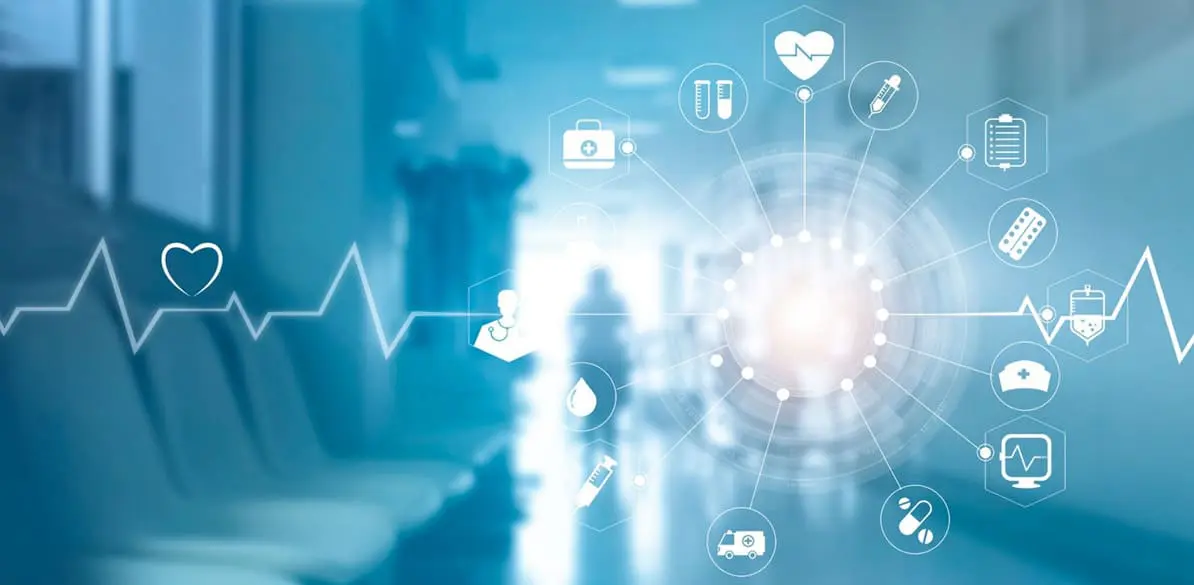Towards digital health: liquid health (D2T)
The new concept of global health that breaks traditional barriers

One of my earliest childhood memories is the time they took my tonsils out. I was very small, I guess I must have been under five years old, and my memory consists of three flashes. The first, that horrible feeling of being completely immobilized with my mouth open and a warm bloody mass emerging from my throat. The second, reveling in the fact that my parents let me eat all the ice cream I wanted (something that never happened again). And the third, that hospital smell, which instantly made me feel anxious. Actually, the operation took place in a private clinic located in an apartment but it still smelt like a hospital. In those days it was the smell of hygiene, disinfectant and medication that marked the boundary between being well and being ill. And that occurred whenever you went for a consultation, to the hospital and even when they had to administer medication to you, mostly by injection, at the medical practitioner’s. Matters relating to your health (to your illness) took place within four walls. And it’s been like that for many years.
But now this is starting to change. Nowadays, matters relating to your health often escape the confines of the hospital or clinic. This happens when you take your blood pressure with the machine you keep at home, and occurs when you have a medical consultation while at work, by phone or even using chat or video. And it occurs most of the times you take medication anywhere outside the healthcare environment. That is why we are able to talk about liquid health, which breaks the physical boundaries of hospitals and clinics, and spills out everywhere.
We can also speak about liquid health in other contexts. For example, in the perception that each of us has about our own health. A few years ago, the definition of being healthy was not being ill. And there was a sort of set dividing line between both situations; either I’m healthy or I’m sick. Nowadays, the concept of being healthy has evolved towards having a sense of wellbeing, of feeling good; it’s almost a type of mood. And here is where the dividing lines begin to break down – from both sides.
They are breaking down on the side of illness. In a recent study carried out on diabetics regarding their state of health, the majority declared themselves to feel healthy or very healthy. In spite of their disease. And this also happens with other chronic diseases, including the more serious ones such as cancer and AIDS. These days, adhering to recommended lifestyle habits and taking the appropriate prescriptions enables many chronically ill people to live a completely normal life. And a healthy one.
They are also breaking down on the healthy side. Before, you started looking after yourself when you were ill and, for example, a diet was something the doctor prescribed and was abandoned as soon as you got over the the illness. Now we are more aware and we understand that we have to start looking after ourselves much earlier and the importance of healthy lifestyle habits in terms of food and exercise. And the proliferation of devices, wearables and mobile phone apps to monitor your physical activity, what you eat, your blood pressure, your weight, etc., is no more than a demonstration of this.
A final context for the application of liquid health would apply to people dedicated to working in this field. Until recently healthcare was a subject exclusively for doctors and nurses. But now, with this new and expanded concept of health, the concept of “healthcare professionals” has been forged to include nutritionists, physiotherapists, personal trainers, etc.
To sum up, we live in a world in which health is evolving towards a more fluid state, breaking the barriers of both physical space and our way of viewing it and also in terms of the professionals involved in it. And for this evolution that are two critical variables: the development of Technology and the storage and analysis of Data. Thus if the chemical formula for the liquid element is H2O, we could say that the chemical formula for liquid health is D2T, two molecules of Data and one of Technology.
About the author::
Pedro Díaz Yuste is Director of Digital Health at MAPFRE, responsible for launching a new Digital Health initiative within MAPFRE. Pedro previously spent four years as Business Director in the finance sector of Google Spain, helping Spanish banking and insurance companies take advantage of Google’s digital business development opportunities. Prior to that, Pedro was the Internet Director of Sanitas, heading up the company’s digital transformation. Pedro also spent part of his career at Yellow Pages, where he was responsible for launching the company’s telephone information services, 11888 in Spain and 1288 in Italy, before later becoming Director of Online Marketing. Pedro graduated as a senior telecommunications engineer from the technical university UPM and went through the Management Development Program at the IESE business school.
